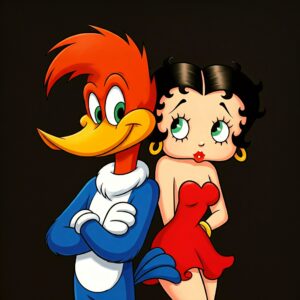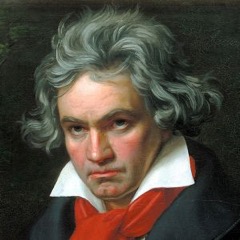By Bermathyl Pluviose
In the 1910s, technical advancements in tracing, printing, and celluloid sheets led to the commercial success of animated shorts. Animated shorts, also known as cartoons or comics, were drawing in huge audiences during their rise in the early 20th century. Gertie the Dinosaur in 1914 is considered the first cartoon to feature an appealing character. Felix the Cat in 1919 is often considered the first animated movie star.
Because they were made for theatrical debut and to appeal to wide audiences, their productions had much more studio support and bigger budgets than is common now.
Walt Disney Animation Studios was founded in 1923 by brothers, Walt Disney and Roy O. Disney and is currently the longest-running animation studio in the world. Through countless hours of experimentation and innovation, Walt Disney pioneered the art of animation, creating iconic characters like Mickey Mouse.
Walt Disney was driven by an unwavering passion for creative storytelling. He believed that music was an essential component of storytelling. He always empowered and supported Carl Stalling, Disney Studio’s first in-house composer, who created scores for the early Silly Symphonies. Stalling’s music not only enhanced the storytelling of the Silly Symphonies but also added a unique and memorable element to these classic animated shorts, making them even more beloved by audiences of all ages. Steamboat Willie, the third Mickey Mouse short made, was Disney’s first cartoon with synchronized sound and was a major success upon its November 1928 debut at the West 57th St. Theatre in New York City. The Mickey Mouse series of sound cartoons quickly became the most popular cartoon series in the United States. Stalling suggested the idea of making a series of musical animated shorts that combined the latest sound technology with storytelling. At first Walt did not seem interested, but when they returned to New York in February to record the sound for The Opry House, the fifth Mickey Mouse cartoon, they also recorded the soundtrack for The Skeleton Dance. A second Disney series of sound cartoons, Silly Symphonies, debuted with 1929’s The Skeleton Dance which was inspired by Camille Saint-Saëns’s Danse Macabre.
Fleischer Studios, Disney’s main rival throughout the 1930’s, produced a series of cartoons with classical music as a backdrop. Brothers Max and Dave Fleischer ran the company from its inception in 1929 until its acquisition in 1941 by Paramount Pictures, the parent company and the distributor of its films. Max was the animator and the creative force with Dave serving as director for many films. Max brought such comic characters as Koko the Clown, Betty Boop, Popeye, and Superman to the movie screen, and was responsible for several technological innovations, including the rotoscope, the “follow the bouncing ball” technique, and the “stereoptical process”.

The incorporation of classical music added a unique dimension to their cartoons, elevating the visual storytelling with the power of timeless melodies. These cartoons continue to be celebrated for their artistic ingenuity and enduring appeal. The “Popeye” series, starring the iconic sailor man, often found him in comical situations accompanied by lively classical pieces. For example, the episode, “The Spinach Overture,” from 1935 utilizes von Suppé’s The Poet and Peasant Overture.
The Fleischer brothers created Betty Boop for Paramount. It featured the glamorous character in various musical escapades as a singer and dancer. She was a pop culture icon who embodied the spirit of rebellion and self-expression of the Jazz Age. Betty Boop cartoons were often set to jazz music, which was used to differentiate them from Disney cartoons. The character is based on many vaudeville show acts including Esther Lee Jones, known by her stage name “Baby Esther”, a trained scat singer, dancer, and acrobat who performed regularly at nightclubs in Harlem and all over the United States in the 1920s. In her act, “Baby Esther” danced, made funny faces, rolled her eyes, and—most famously—interpolated wordless phrases such as “Boo-Boo-Boo-Roo”.
Paramount had deals with the United States government for propaganda media so there are many instances in which Betty Boop episodes are meant to support a new domestic policy or rally support for the war effort. The Betty Boop episode, The New Deal show from 1937 features the song, “New Deal for Pets” which has a lot of scat lyrics. This is a nod to President Franklin D. Roosevelt’s New Deal initiatives from 1933 to 1938.
Franz Von Suppé was a composer who wrote for the theater, including operas, operettas, ballets, and comedies. While most of his works have not survived, several of his overtures have and are often featured in cartoons and movies such as Morning, Noon and Night (1933) starring Betty Boop featuring the overture Morning, Noon, and Night in Vienna by Von Suppé.
Franz Von Suppé was not only popular with Fleischer Studios cartoons. Disney also featured his compositions such as Mickey Mouse in Symphony Hour from 1942 conducting the Light Cavalry Overture by Franz Von Suppé.
Looney Tunes is an American animated franchise produced and distributed by Warner Bros. It began as a series of short films that originally ran from 1930 to 1969, alongside the related series Merrie Melodies, during the golden age of American animation. Merrie Melodies was an animated comedy short film series distributed by Warner Bros. Pictures from 1931-1997. It was part of the Looney Tunes franchise and featured many of the same characters. Looney Tunes was more story-driven and Merrie Melodies remained a vehicle for Warner Brothers musical properties, but over time the two names became virtually interchangeable with Looney Tunes being the banner Warner currently publishes animated content under.
 Bugs Bunny, a quintessential character in animation history, was created by animators Bob Clampett and Ben “Bugs” Hardaway in 1940. Known for his quick wit, irreverence, and the catchphrase “Eh…what’s up, Doc?”, Bugs Bunny has become a beloved symbol of American pop culture whose episodes introduced generations to classical music. One such episode is Rhapsody Rabbit from 1946. In which Bugs Bunny performs Liszt’s 2nd Hungarian Rhapsody.
Bugs Bunny, a quintessential character in animation history, was created by animators Bob Clampett and Ben “Bugs” Hardaway in 1940. Known for his quick wit, irreverence, and the catchphrase “Eh…what’s up, Doc?”, Bugs Bunny has become a beloved symbol of American pop culture whose episodes introduced generations to classical music. One such episode is Rhapsody Rabbit from 1946. In which Bugs Bunny performs Liszt’s 2nd Hungarian Rhapsody.
Using recognizable classical pieces of music as a backbone for the shorts and the effort in timing on-screen events with the music garnered huge audiences and awards. As the decades progressed and the general public’s awareness of classical music declined, these cartoons became the vehicle of classical music introduction to younger audiences.
Warner Brother’s commitment to classical music has continued to this day with bundles and box sets that encompass classical music. In addition, performances of episodes with live symphony orchestras have been performed countless times worldwide.
Gioachino Rossini’s Figaro, from The Barber of Seville (1816), became a recurring theme in Warner Brothers and MGM cartoons, often used to contrast Figaro’s dramatic intentions with the cartoon’s comedic tone. The aria, Largo al Factotum’s intricate melody and grand operatic style provided a humorous counterpoint to the slapstick antics and over-the-top situations. In Rabbit of Seville from 1950, Bugs Bunny cleverly parodies the opera, taking on the role of Figaro and outsmarting Elmer Fudd. The aria’s familiar tune is played over chaotic chase scenes, creating a jarring and amusing juxtaposition.
The overture and Largo al Factotum from The Barber of Seville are particularly popular and were used in many episodes and compositions staring Bugs Bunny, Sylvester, Elmer Fudd, Woody Woodpecker, and Daffy Duck. One Froggy Evening from 1955 was the debut of Michigan J. Frog, better known as the Warner Brothers’ frog, the company’s mascot. In 1994, it was voted No. 5 of The 50 Greatest Cartoons of all time by members of the animation field. In 2003, the United States Library of Congress deemed the film “culturally, historically, or aesthetically significant”, and selected it for preservation in the National Film Registry. These episodes demonstrate the Looney Tunes’ ability to use classical music in unexpected ways, creating laughter and delight through the contrast between the serious nature of the compositions and the absurd humor of the cartoons.
 Tom the Cat and Jerry the Mouse were created by William Hanna and Joseph Barbera who years later would leave MGM and form Hanna-Barbera known for the Huckleberry Finn Show, The Flinstones, and Scooby-Doo. The Flintstones ran from 1960 to 1966 and was the first animated show to air in prime time.
Tom the Cat and Jerry the Mouse were created by William Hanna and Joseph Barbera who years later would leave MGM and form Hanna-Barbera known for the Huckleberry Finn Show, The Flinstones, and Scooby-Doo. The Flintstones ran from 1960 to 1966 and was the first animated show to air in prime time.
Johann Strauss Jr.’s music found an unexpected home in the zany world of many cartoons. The juxtaposition of his sophisticated, often dramatic music with the characters and their situations creates a humorous and surprising contrast. From A to Z-Z-Z-Z (1954), The Stupid Cupid of 1944, and Hot Cross Bunny from 1948 feature Frühlingsstimmen, Voices of Spring. and Tom and Jerry in the Hollywood Bowl from 1950 features the overture to Die Fledermaus. These episodes demonstrate the versatility of Strauss’s compositions, which could be adapted to fit a wide range of comedic situations. In Hurdy-Gurdy Hare from 1950 includes Johann Strauss Jr.’s Künstlerleben, Artist’s Life; Johann Mouse from 1953 features Wierner Blut, Vienna Blood, the Tritsch-Tratsch Polka, and The Blue Danube Waltz; Herr Meets Hare from 1945 features Die Fledermaus Overture, Wiener Blut; and The Unruly Hare from 1945 features Perpetuum Mobile.
A Corny Concerto from 1943 is a Warner Bros. Merrie Melodies full-length production directed by Bob Clampett starring Bugs Bunny, Porky Pig, Elmer Fudd, and Daffy Duck. The piece parodies classical music with Bugs Bunny’s horsing around serving as a comedic counterpoint to the somber compositions. They perform a parody of Walt Disney’s Silly Symphony cartoon series and specifically his 1940 feature Fantasia. The film uses two of Johann Strauss Jr.’s best known waltzes, “Tales from the Vienna Woods” and “The Blue Danube”.
Tchaikovsky’s grand and dramatic music found an unlikely home in the comedic world of Looney Tunes. The contrast between the absurd lyrics and exaggerated actions of the characters played against the grandeur of the music, creating a comedic masterpiece. Examples are Holiday For Shoestrings from 1946 featuring Tchaikovsky’s Humoresque, Dance of the Sugar Plum Fairy, and the Chinese, Arabian, and Russian Dances from The Nutcracker. The Bowling Alley Cat features the Sleeping Beauty Waltz; and Life with Feathers features Tchaikovsky’s Romance.
Ponchielli’s “Dance of the Hours” from Fantasia (1940) is a visually stunning and musically enchanting ballet sequence. It features four different dances representing the hours of the day: morning, noon, afternoon, and night. Each dance showcases unique costumes, choreography, and music, creating a captivating and magical spectacle.
Also from Fantasia, Beethoven’s Symphony No. 6, also known as the “Pastorale,” is a more intimate and contemplative work than its predecessor. It features a series of pastoral scenes, including a peaceful countryside, a scene by the brook, a village festival, a thunderstorm, and a shepherd’s song. The music is filled with natural sounds and imagery, creating a sense of tranquility and peace.
“Flight of the Whales” from Fantasia 2000 is a breathtaking piece of orchestral music that captures the majesty and power of these magnificent creatures. The music from Respighi’s The Pines of Rome features soaring melodies, rhythmic patterns, and evocative harmonies that evoke the vastness and beauty of the ocean. The piece is a tribute to the whales and their importance to the ecosystem.
Two animated shorts featuring a piano concert setting were nominated for the Academy Award for Best Subject in 1946. “Musical Moments from Chopin” is a Musical Miniatures cartoon, co-starring Andy Panda and Woody Woodpecker performing a Chopin polonaise on stage. The Cat Concerto from 1947 won the Academy Award. Tom, dressed in a white tie, is playing Franz Liszt’s “Hungarian Rhapsody No. 2” on the piano while Jerry, who lives inside the piano, disrupts Tom’s performance. That’s all folks!

